econ chapter 8 + 9
1/16
There's no tags or description
Looks like no tags are added yet.
Name | Mastery | Learn | Test | Matching | Spaced |
|---|
No study sessions yet.
17 Terms
how does a tax affect market participants?
Welfare of buyers measured by consumer surplus
Welfare of sellers measured by producer surplus
Government takes in tax revenue: size of tax (T) * quantity of the good sold (Q)
label each part of this graph with and without tax:
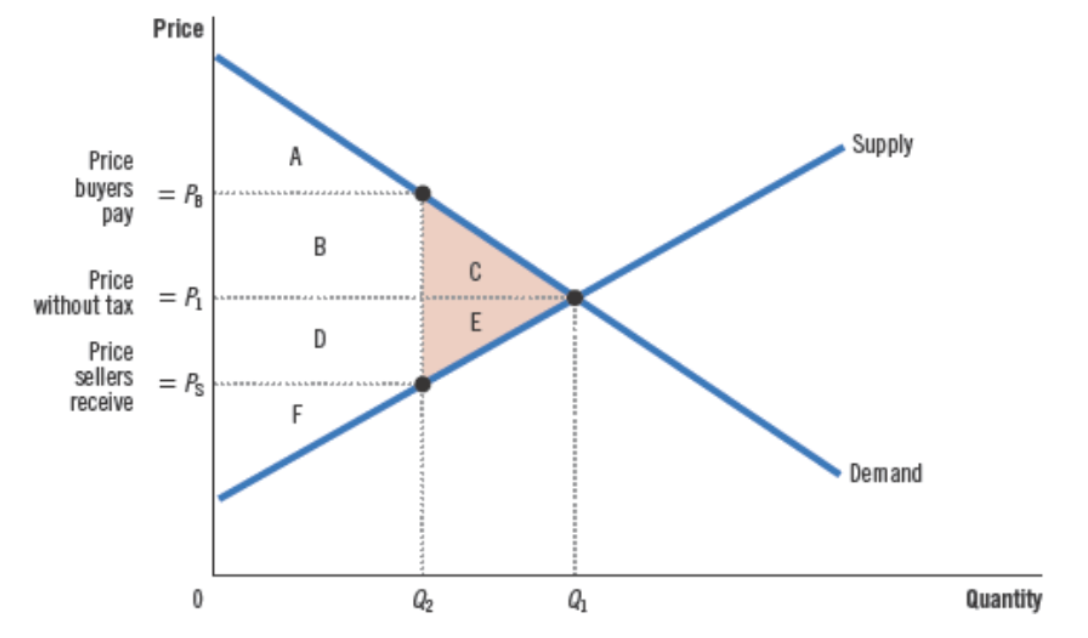

What determines whether the deadweight loss from a tax is large or small?
The deadweight loss is larger when the supply curve is more elastic
The deadweight loss is larger when the demand curve is more elastic
how does deadweight loss vary as tax revenue vary
As the size of taxes rise, the deadweight loss grows exponentially larger and larger
The last two panels of Figure 6 summarize these results. In panel (d), we see that as the size of a tax increases, its deadweight loss quickly gets larger. By contrast, panel (e) shows that tax revenue first rises with the size of the tax, but as the tax increases further, the market shrinks so much that tax revenue starts to fall.
what is world price?
comparing the price of a good with the price of the same good in other countries
the price of a good that prevails in the world market for that good
when do you export a good?
If the world price of textiles exceeds the domestic price, then the country will export textiles
They want to sell at a higher price
when do you import a good?
If the world price is lower than the domestic price, the country will import textiles
People want to buy at a lower price
what does the domestic price tell us?
opportunity cost:
If the domestic price is low, the cost of producing textiles in Isoland is low, suggesting that Isoland has a comparative advantage in producing textiles relative to the rest of the world.
If the domestic price is high, then the cost of producing textiles in Isoland is high, suggesting that foreign countries have a comparative advantage in producing textiles.
label all the parts in this graph before and after trade:
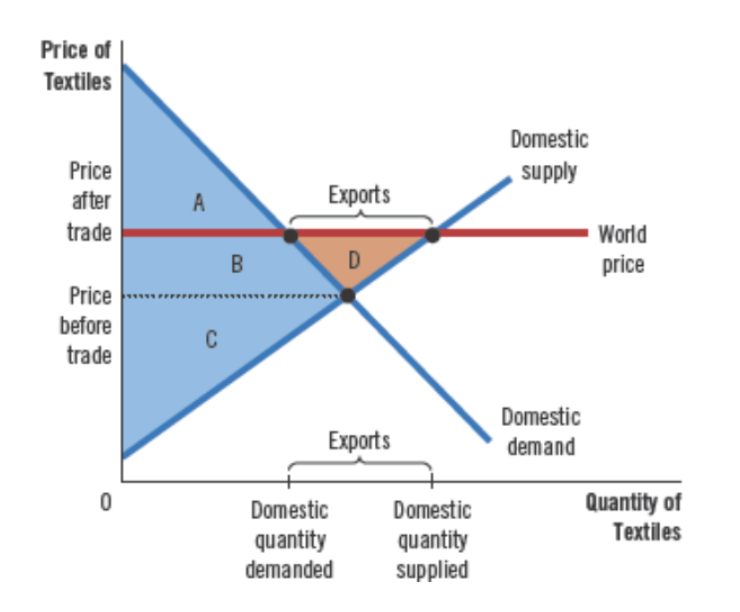

what happens when a country allows trade and becomes an exporter of a good?
Once trade is allowed, domestic prices rises equal to the world price
Sellers are better off, and buyers are worse off
Total surplus rises by an amount equal to area D – trade raises the economic well-being of the country as a whole
label each part of this graph before and after trade:
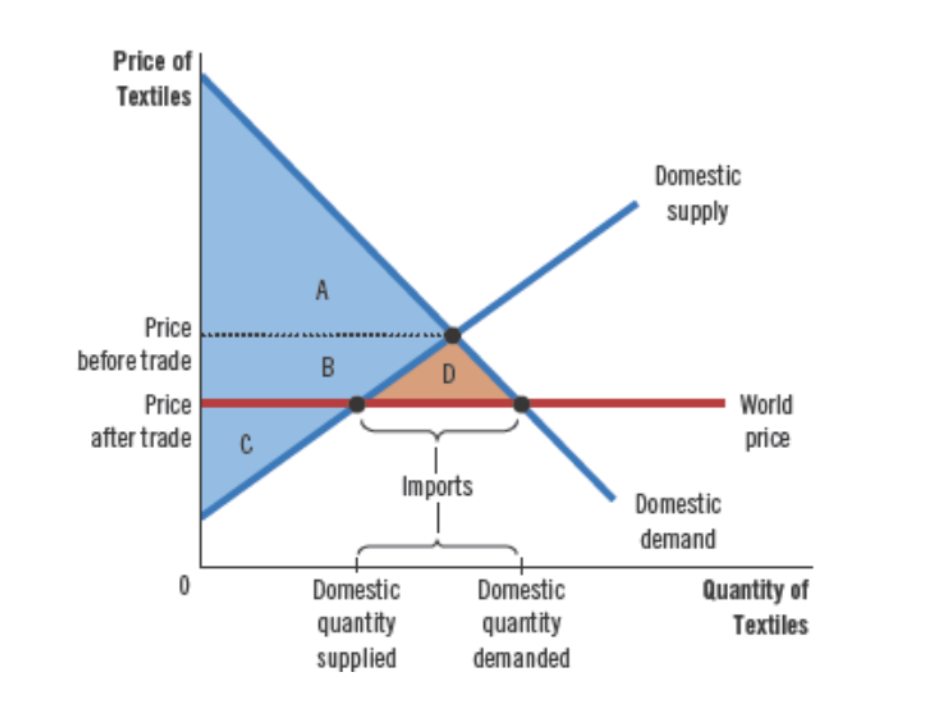
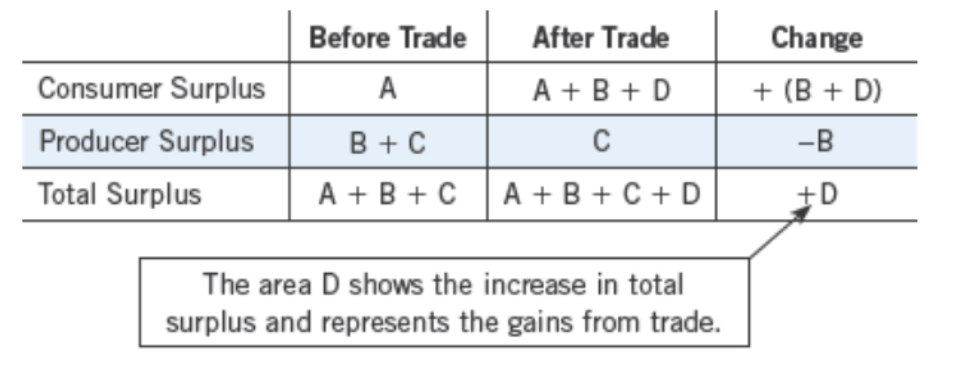
what happens when a country allows trade and they become an importer of a good?
Buyers are better off and sellers are worse off
Total surplus rises by an amount equal to area D – trade rises the economic well-being of the country as a whole
what is a tariff? and what effect will they have?
Tariff – a tax on imported goods
Tariffs have no effect if the country is exporting goods (only importing goods)
label this graph before and after tariffs:
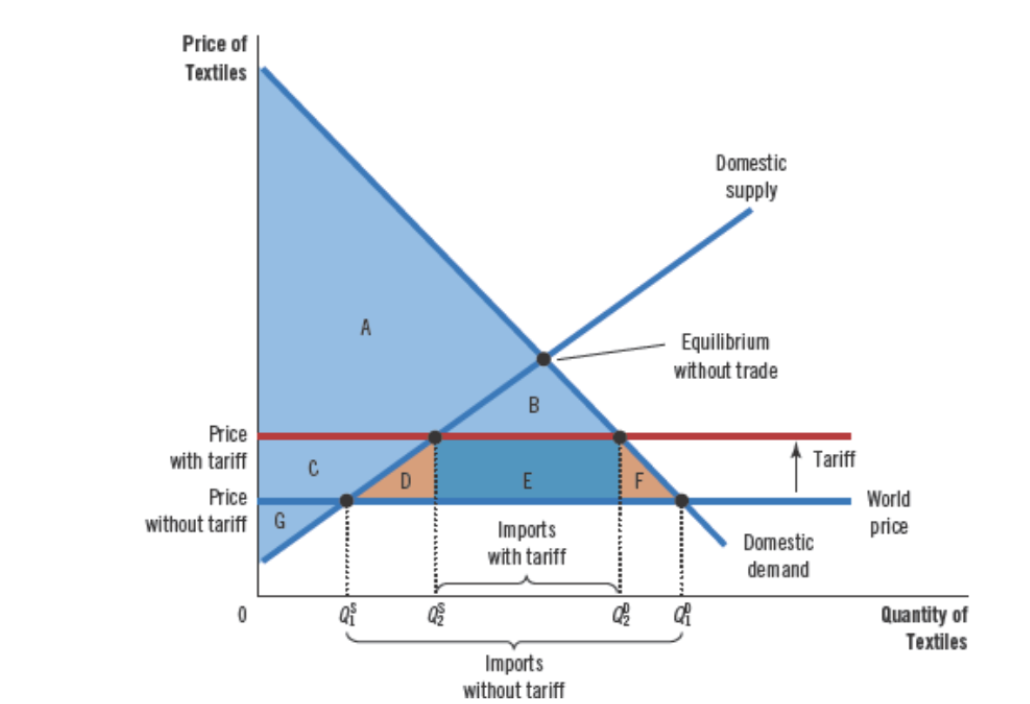

how do tariffs impact an economy?
The tariff reduces the quantity of imports and moves the domestic market closer to its equilibrium without trade.
Domestic sellers are better off
Domestic buyers are worse off
Government gets the tariff revenue
creates deadweight loss
what are some benefits of international trade?
free trade increases variety for consumers, allows firms to take advantage of economies of scale, makes markets more competitive, makes the economy more productive, and fosters the spread of technology. I
what are the arguments for restricting trade?
The jobs argument: “trade with other countries destroys domestic jobs”
Free trade creates new jobs even as it destroys some old ones
Total unemployment does not rise as imports rise, because job losses from imports are offset by job gains in export industries
The national security argument: “the industry is vital to national security”
Protecting key industries may be appropriate when there are legitimate concerns over national security
Companies have a financial incentive to exaggerate their role in national defense
Protection from foreign competition can be lucrative
The infant-industry argument: “new industries need temporary trade restriction to help them get started. Older industries need temporary protection to help them adjust to new conditions”
Difficult to implement in practice
The temp policy is hard to remove
Protection is not necessary for an infant industry to grow
The unfair-competition argument: “free trade is desirable only if all countries play by the same rules”
Importing from a country that subsidizes production:
Increase in total surplus for importing country
Imports of low-cost products subsidized by the other country’s taxpayers
The gains to our consumers will exceed the losses to our producers
The protection-as-a-bargaining-chip argument: “trade restrictions can be useful in obtaining concessions from our trading partners. The threat of a trade restriction can help remove a trade restriction already imposed by a foreign government”
The threat may not work